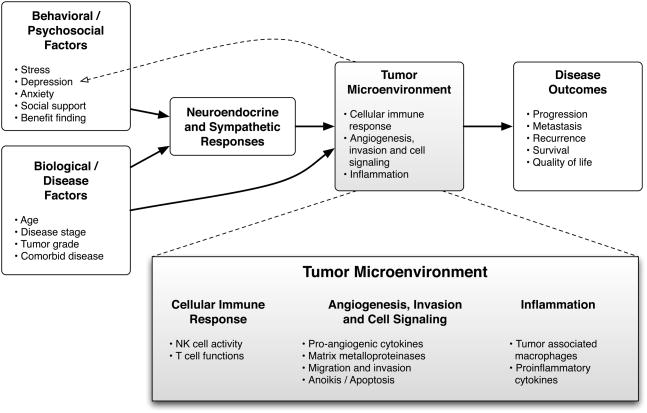Figure 1.
In addition to known biomedical risk factors, this biobehavioral model of cancer control illustrates the contributions of behavioral risk and resilience factors to cancer outcomes. Stress-related behavioral factors can activate (or inhibit) the hypothalamic pituitary adrenocortical (HPA) axis and sympathetic nervous systems (SNS). The products of these pathways, including glucocorticoids, catecholamines, and other neuroendocrine factors, have downstream effects on physiological mechanisms in the tumor micorenvironment important for the control of malignancy. These include the modulation of cellular immune processes relevant to tumor surveillance and containment, inflammation, and other pathophysiological processes critical to cancer growth and progression, including angiogenesis, invasion, and tumor-promoting cell-signaling pathways. Alteration of these physiological processes can encourage or inhibit tumor progression and metastasis. The potential effects of tumor- and treatment-derived inflammatory processes on depression (dashed arrow) and quality of life are also illustrated.

